Apple tree Gloucester: a delicious gift from German breeders
In the 50s of the last century in Germany, gardeners first got acquainted with a new variety of apple trees. It was named Gloucester and conquered other countries due to its high yield and frost resistance.
Content
- What are the features of this type of apple trees
- How to ensure abundant fruiting
- Gloucester: saving a tree from pests
What are the features of this type of apple trees
To create a new masterpiece, geneticists used Glockenapfel and Richard Delicious. The apple tree of Gloucester combines the best qualities of its long-known parents. She is not afraid of frost -250C. Flowers feel normal even at -20C.
The tree grows fast enough. An adult specimen attracts attention with an oval dense crown. The main branches rush steeply upward.
Timely circumcision - an important point for the apple trees of Gloucester. This is the prevention of fungal diseases by regulating the humidity inside the plant.
For fruits to form, the variety must be pollinated. Spartan, Jonathan, or Idared do a great job in this role.
The apple tree of Gloucester does not bloom too early: additional protection against sudden spring frosts is provided.
Grafted trees will delight with apples for the 4th year. The harvest is collected constantly, it becomes more and more abundant from season to season. The peak of fruiting is after 10 years of growth. During this period, approximately 70 kg of quality fruit can be harvested from a healthy, well-groomed plant.
Features of Gloucester apples:
- Quite large (up to 200 gr.), Rounded-conical.
- The shade is light yellow with a uniform pink blush.
- The rind is firm, glossy.
- The pulp is creamy, firm.
- The taste is sweet with sour notes.
- Harvest time is the end of September. The most delicious are the fruits that lasted until January.
- Long shelf life: approx. 4 months.
- They tolerate transportation well: a profitable commodity for trade.
The apple tree of Gloucester is the result of painstaking professional work to create a high-yielding, weather-resistant product.
How to ensure abundant fruiting
Having planted an apple tree on the site Gloucester, zealous owners expect good harvests.
Success will not be long in coming if you provide all the conditions for the normal development of the tree:
- The soil must be fertile. When it is sour, lime is used.
- Nitrogen in the soil is an essential element for the rapid growth and development of fruits.
- The best way to plant a tree is in an open area, away from other trees.
- A seedling wedged somehow in a dense garden will not grow well due to old roots. Other trees hide him from the much needed sunlight.
A Gloucester apple sapling is the easiest way to grow a new variety on the site.
- Before planting remove all damaged roots, straighten the rhizome and cover up the wounds.
- If foliage appears on the plant or buds swell, planting is contraindicated.
- Having dug a hole from 45 to 60 cm deep and leveled the roots, the apple seedling is placed in the soil.
- They are covered with earth, tamped, watered abundantly.
- During the first year after planting the tree, fertilizers are not applied.
- Starting from the second year, formulations enriched with nitrogen, phosphorus and potassium are added.
When the apple tree turns 5 years old, urea and humate are added to the above fertilizers. Substances are diluted in water and the plant is watered.
The key to a good harvest is proper planting, timely fertilization and watering.
Gloucester: saving a tree from pests
They can cause considerable harm to the apple tree dangerous insects... They have a detrimental effect on fruits, leaves, buds, and buds.
To protect the Gloucester variety from enemies, you need to know them:
- Apple weevil. It is especially dangerous for a flowering tree. They fight beetles by shaking them off onto the film, setting up special traps. Spraying with Karbofos is effective during the budding period.
- Leaf roll. These are caterpillars, which in the springtime cause irreparable harm to the buds and buds. To protect the apple tree, the old bark is cleaned and burned, sprayed with a 3% solution of Nitrafen. When the first hint of leaves appears, Zolon or Chlorophos is used.
- Apple honeydew. Orange-yellow eggs are the source of dangerous creatures. They feed on fluid from the kidneys. The appearance of honeydew is a signal of the appearance of these parasites. Rescue measures: spraying before bud break with Nitrafen, in an advanced case - Karbofos.
- Fruit mite. The pest settles on the leaves and absorbs the juice. The preventive measure is to remove the old bark. The drug Iskra Bio will destroy the larvae.
Timely and effective methods of control will protect the Gloucester apple tree from the harmful effects of parasites.
Gloucester is a generous crop, frost resistant. The owners can enjoy the rich sweet-sour taste of excellent fruits until spring.



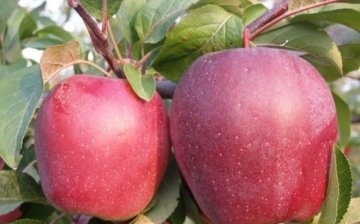
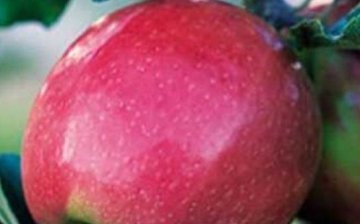

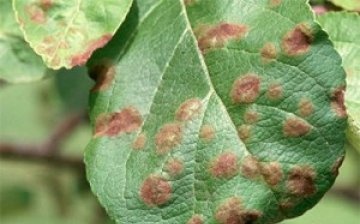




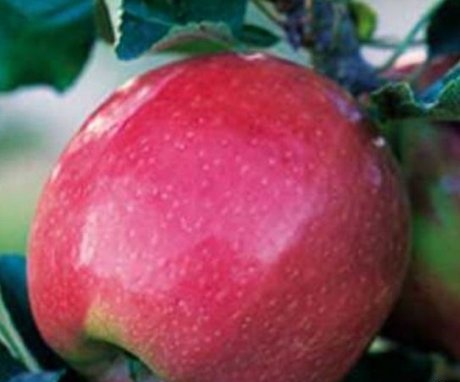
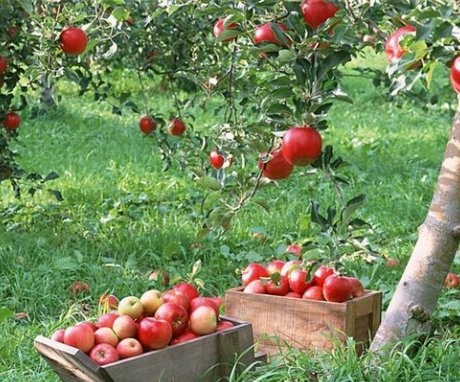
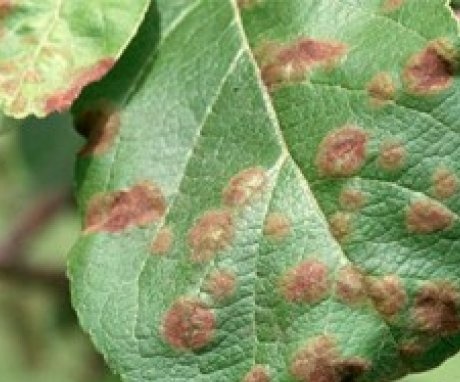
Delicious but late variety. The apples themselves are hard and are only poured with juice during the autumn months.